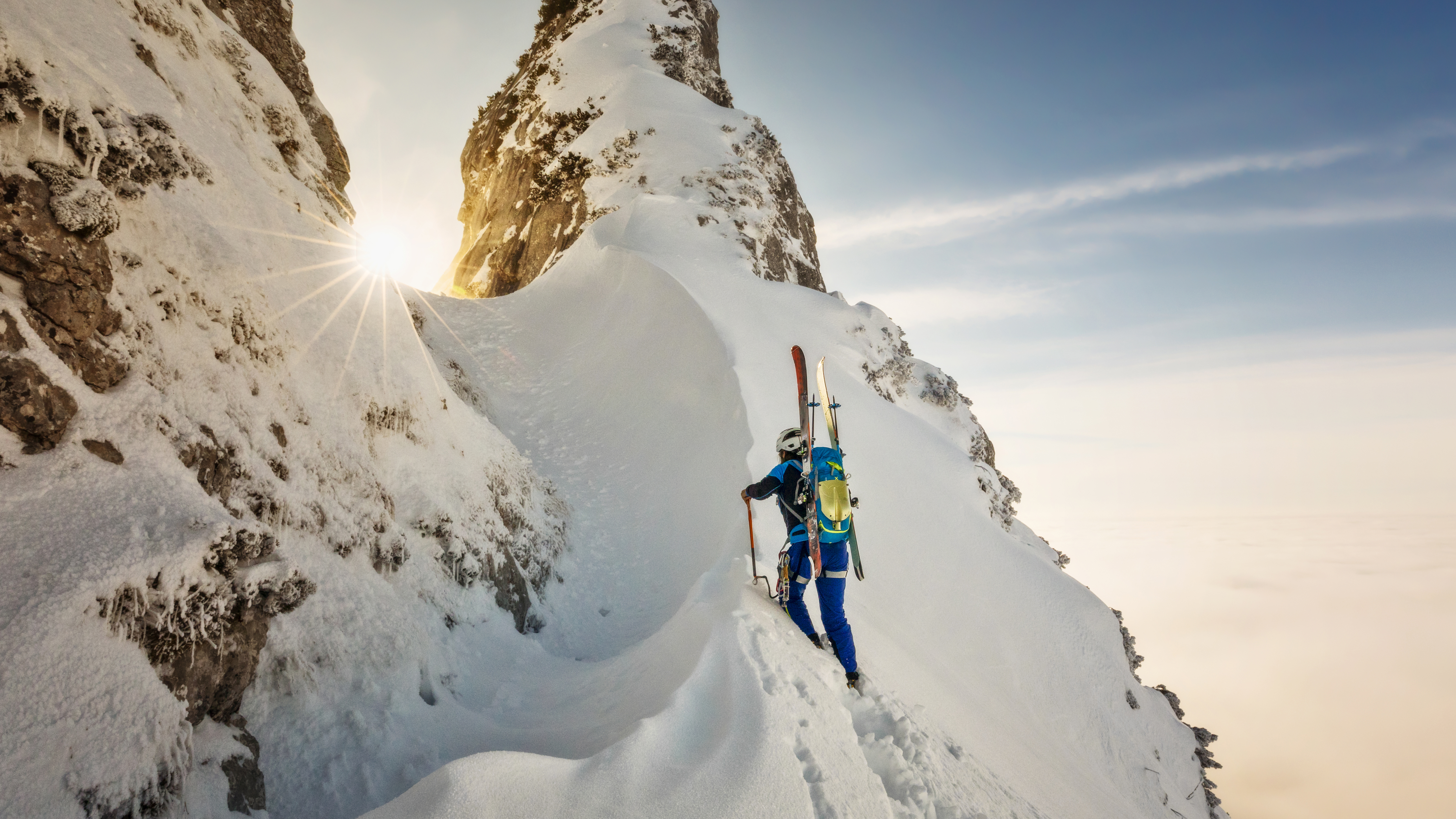Curling isn’t just a sport played by professionals that we see solely at the Winter Olympics.
Curling has become universal. It has transposed into something recreational and we see it throughout communities, both in country club atmospheres and smaller, more intimate settings in underfunded neighborhoods.
The sport began with a stone and a broom in the depths of Scotland in the 1500s. And now, research “curling near me” on your phone and you can find a league right in your backyard to join. It’s much trendier than you think.
Children, adolescents and adults play, from Canada to Sweden all the way to the U.S. and beyond. Even pro athletes, like former Pro Bowl NFL tight end Vernon Davis, participate in the sport. In fact, Davis is the honorary captain for Team USA and advocates the diversification of curling for Black and indigenous people of color. Team USA Curling formed a Diversity and Inclusion Committee and partnered with New Jersey curler Debra Martin’s Ice Breakers initiative to promote the sport’s inclusivity.
Get San Diego local news, weather forecasts, sports and lifestyle stories to your inbox. Sign up for NBC San Diego newsletters.
But how did the sport reach this point?
What is curling and where did it begin?
Curling dates back to the 16th century in Scotland and the Netherlands. It is on record as one of the oldest team sports in history.
Beijing 2022 Winter Olympics
Watch all the action from the Beijing Olympics live on NBC
“What may have started as an enjoyable pastime of throwing stones over ice during a harsh Northern European winter, has evolved into a popular modern sport with its own world championships, which attract fans and large television audiences,” according to the World Curling Federation.
But what seems like a transition from pastime to competition for the sport isn’t actually the only truth. Yes, it began as a ruleless hobby and shifted into a world sport displayed every four years on television at the Winter Olympics. But the sport has also reverted back to its simple roots of being merely a popular recreation for people to enjoy, hence why it is so popular all over the world in clubs, on rec teams and in community leagues, especially in the United States.
When did curling become an Olympic sport?
International competition for men began at the 1924 Winter Olympics in Chamonix, France. During these Games, Great Britain medaled by defeating Sweden and France, but it wasn’t until 1998 that the Organizing Committee of the Nagano Olympic Winter Games recognized curling in the Olympic program.
In 1932 during the Lake Placid Games, curling was listed as only a demonstration sport. Canada ended up beating the U.S. in these Games.
A meeting in Edinburgh was held in 1957 to form the national organization that would be required to permit Olympic medal status, but no progress was made until 1959 when Canada and Scotland decided to launch the Scotch Cup series, a competition played between their men’s national champion teams. Other countries sparked interest in the sport and joined the cup, with the U.S. officially entering in 1961.
Finally, in 1967 a constitution for the International Curling Federation was approved in Perth, Scotland, and a set of rules for the sport was proposed. The committee became known as the World Curling Federation in 1990 and at the 1992 Summer Games in Barcelona, curling was granted by the International Olympic Committee to have official medal status for men and women. In 1998, the sport made its Olympic debut and by the 2002 Winter Games in Salt Lake City, curling reigned supreme and has erupted worldwide ever since.
Why do Americans love curling?
Curling is more than just a sport to those who sweep a broom or throw a stone. There is a sense of camaraderie in a curling bonspiel when strategy and precision go hand-in-hand to win a match.
A plethora of curlers have been influenced by Winter Olympic champions and pro athletes who delve in the sport.
“Watching Vernon Davis left a vivid impression on me because he was an unexpected ambassador, not just a football player,” Martin said.
Team USA Curler Monica Walker believes curling’s history is the reason for its exclusivity. Often paired with golf or tennis, the sport began its prevalence in more elitist-type atmospheres.
“From what I know about U.S. country club culture is that it tends to be very white, male, upper class, and I think that’s really limiting to how the sport is presented to the general population,” Walker said.
This helps explain why initiatives like Ice Breakers and advocates for diversity have grown to love the sport.
Who are some Americans who play the sport?
Davis has been hooked on curling since the 2010 Vancouver Olympics. Though he is not technically competing with Team USA, he has been involved in the last three Winter Olympics. As soon as the U.S. curling team heard of its passionate new fan, it chose to crown him honorary captain, a role he served at the 2010 Winter Games, the 2014 Sochi Winter Olympics and the 2018 PyeongChang Winter Olympics.
In a more competitive realm, John Shuster, captain of Team USA, has competed in four straight Winter Olympics (2006, 2010, 2014 and 2018) and will be competing at the 2022 Beijing Games. He also participated in nine World Curling Championships (2003, 2005, 2006, 2009, 2015, 2016, 2017, 2019 and 2021). With humble beginnings growing up in Duluth, Minn., skip Shuster led Team USA to the gold at the 2018 Winter Olympics. This was the first American team to ever complete the feat.
Another skip currently competing on Team USA is Tabitha Peterson. She is originally from Minneapolis, Minn., and is a two-time women’s national champion, as well as a bronze medalist at the 2010 World Junior Championships.
But it’s not just Olympians and professional athletes. Ordinary Americans across the nation – yes, those who work full-time jobs and take care of their families – also curl.
Take Martin, for instance. She and her wife began curling late in their adulthood at a club in their own hometown.
“I lived 15 minutes from the only dedicated curling club in New Jersey for 15 years and didn’t know it was there,” added Martin, who is the co-founder of the Ice Breakers program.
How many people curl in the United States?
According to the United States Curling Association, there are 185 curling clubs across the nation and approximately 23,500 curlers participating in said clubs.
Do other countries love the sport as much as Americans do?
Curling is a worldwide phenomenon that erupted in the states only after it was invented in Scotland. Therefore, yes, other countries definitely enjoy the sport.
Sweden and Canada are on the top of the list for the greatest nations in both men’s and women’s curling, with Sweden being ranked first in the world and Canada being the strongest nation. Canada is the most successful team in the history of curling. The nation is ranked first in mixed doubles (after winning the gold in 2018), third in men’s and fifth in women’s. Canada has received 11 Olympic medals (six of those being gold) and won a number of world championships: 36 for the men’s team, 17 for the women’s and two for mixed doubles.
How can I watch curling at the 2022 Winter Olympics?
Competition begins on Feb. 2 and runs until Feb. 19.
Curling will consist of three events: mixed doubles, men’s and women’s. There are nine medals in total to be earned.
Mixed doubles will take place from Feb. 2-8 and men’s and women’s stretch from Feb. 9-19. Semifinals and medal games start Feb. 17 and run through Feb. 19.




